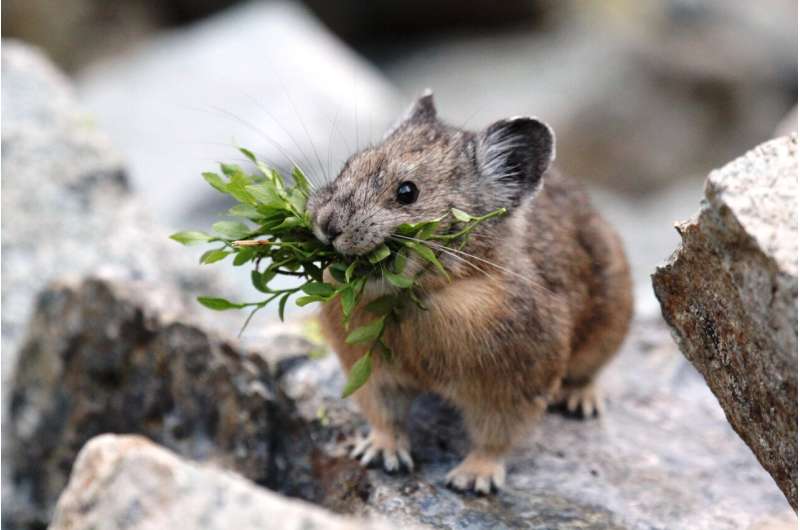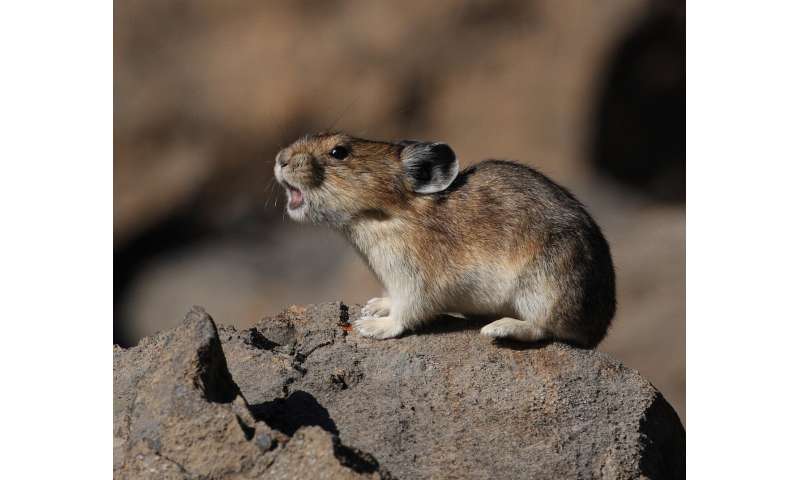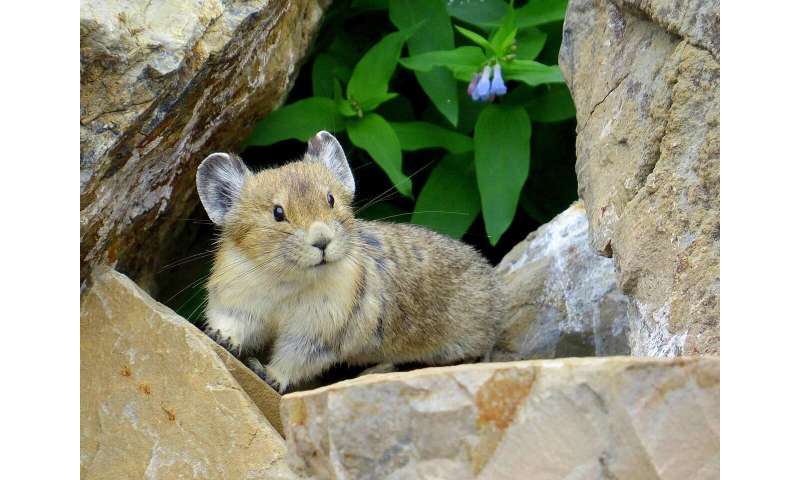September 24, 2019 report
Study: Geography, not genetics, influences American pika's response to climate change

A very large team of researchers from across the U.S. along with a few from Canada and Australia has found that geography is playing more of a role in how the American pika is responding to climate change than genetics. In their paper published in the journal Nature Climate Change, the group describes their exhaustive study of the small animal and what they found. Meagan Oldfather with the University of Colorado Boulder has published a News & Views piece in the same journal issue outlining the work by the team.
The American pika is a small animal that looks like and is closely related to rabbits and hares. The species is much smaller and has ears that more resemble those of a mouse. It lives in the mountains of the western United States, and is a creature that is very sensitive to climate change. It is cold in the mountains where it lives—to survive, pika have evolved a speedy metabolism that generates a lot of heat, which they are not very good at releasing if the air around them gets too warm. For that reason, the American pika has been disappearing from a lot of areas—but they have been thriving in others. The consensus among wildlife specialists has been that the groups that are doing well likely have a genetic advantage. In this new effort, the researchers sought to test this theory.
To find out the real reason some groups of pika were doing better than others, the researchers collected a massive amount of data that has built up over the years regarding study of the American pika. They then sorted all the known pika into four characteristic groups: genetic lineage, ecoregion, elevation and physiographic region. Next, the team compared clusters of pika within each of the group characteristics to 20 variables related to climate change—such as temperature, humidity and how much rain falls in a given area. They finished by noting which of the four groups they had created best fit reality—where pika were surviving versus where they were not. The researchers report that the ecoregion turned out to be the best model to explain why different groups of pika were better able to cope with a warming climate—those living in areas where they could continue to get water from plants and seek shelter from predators were doing the best.
-

American pika. Credit: Erik Beever -

American pika. Credit: Will Thompson
More information: Adam B. Smith et al. Alternatives to genetic affinity as a context for within-species response to climate, Nature Climate Change (2019). DOI: 10.1038/s41558-019-0584-8
Journal information: Nature Climate Change
© 2019 Science X Network














